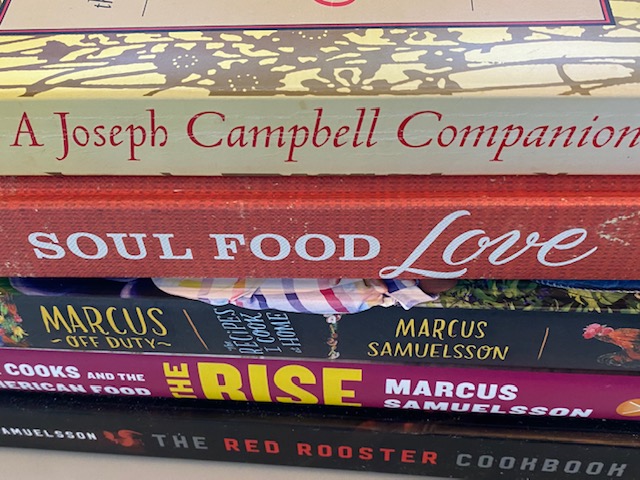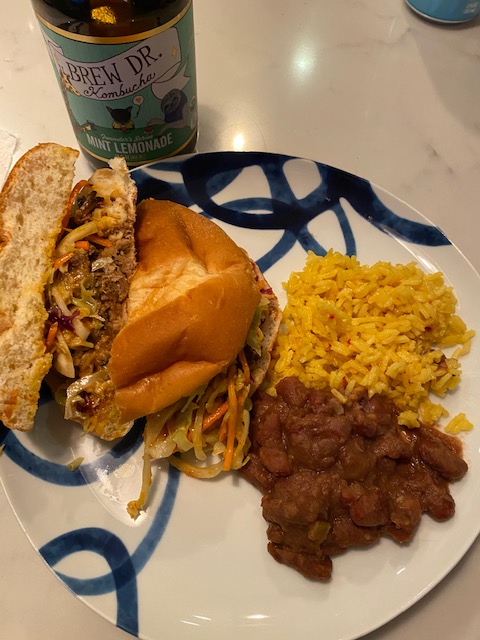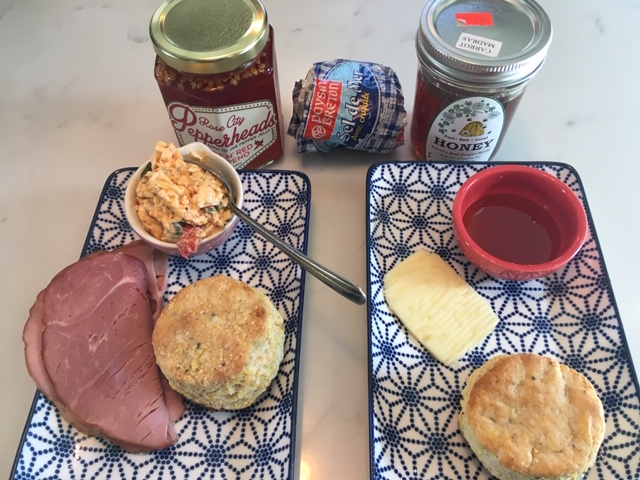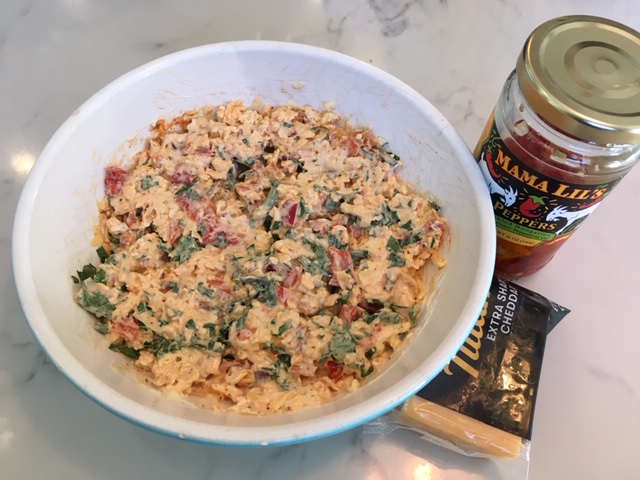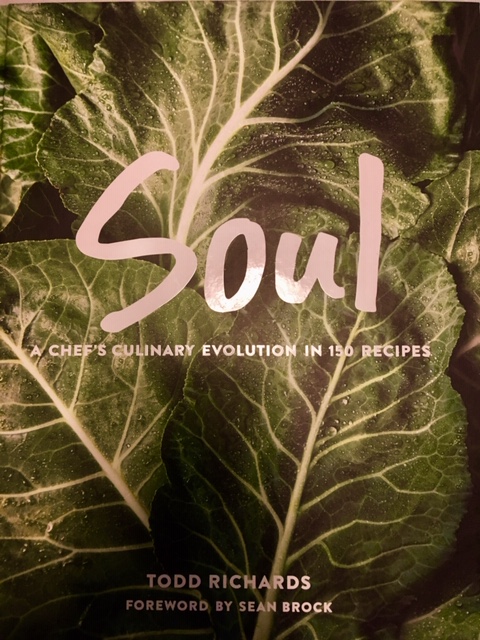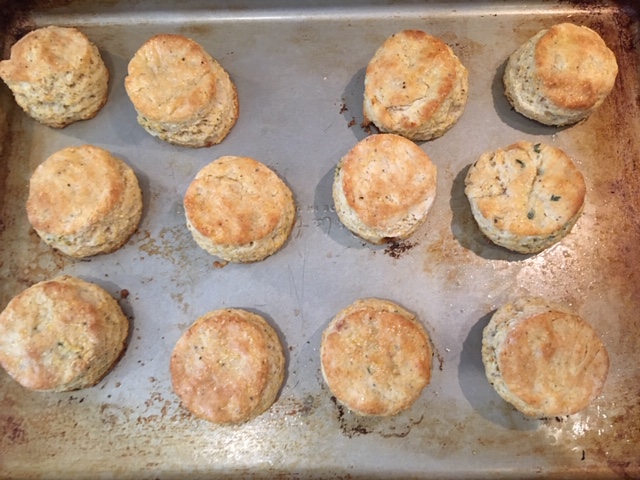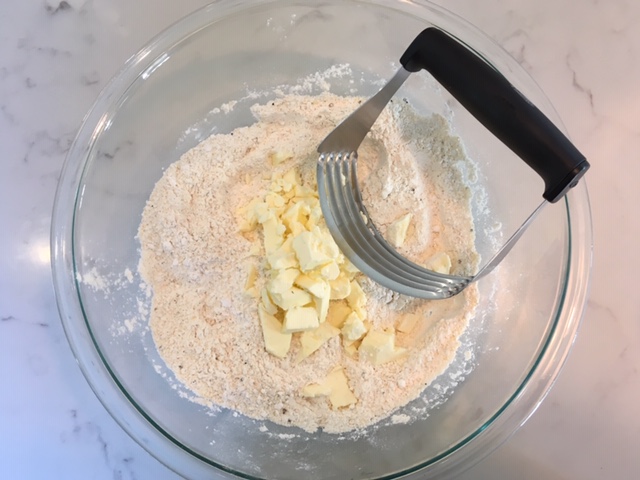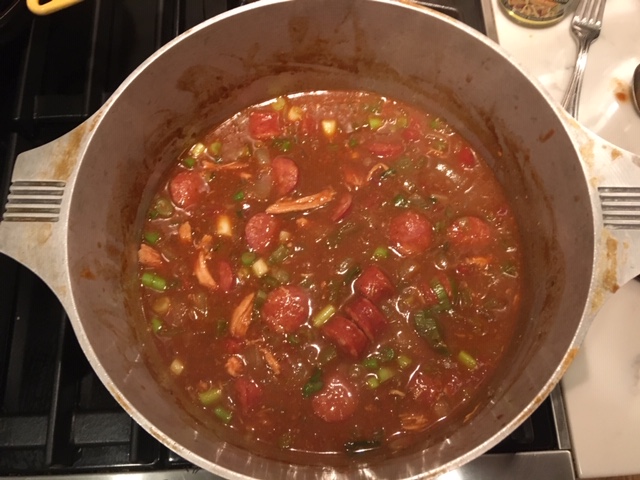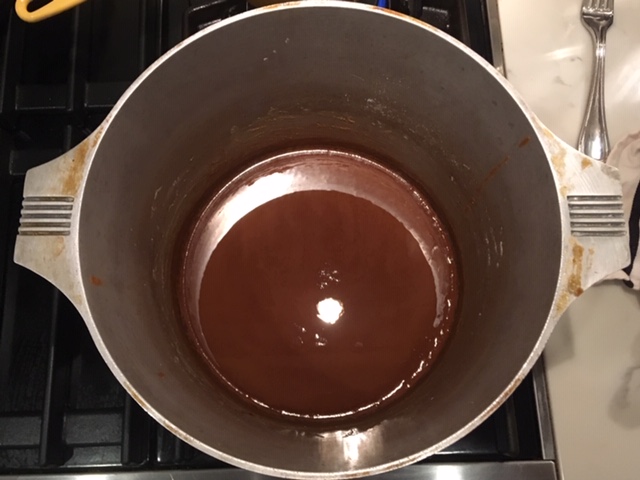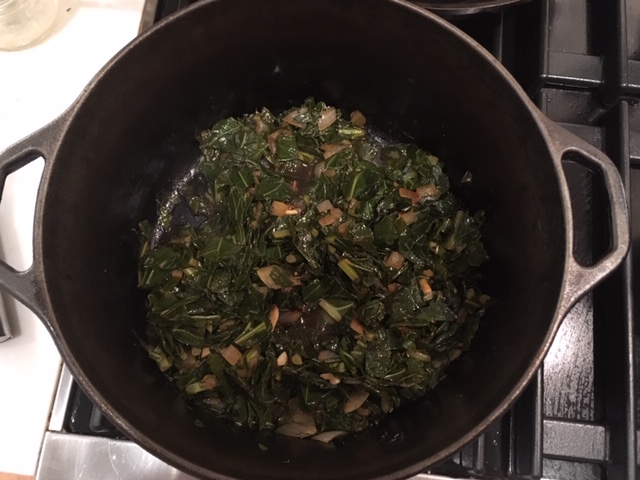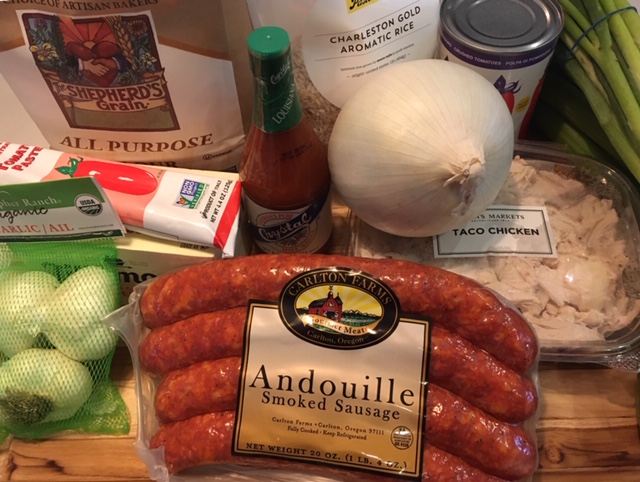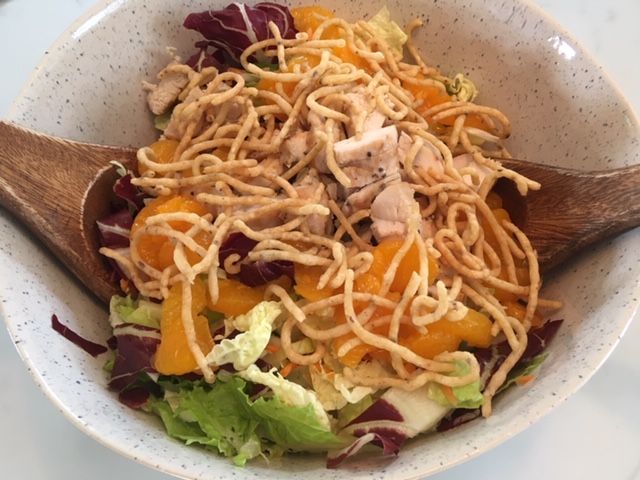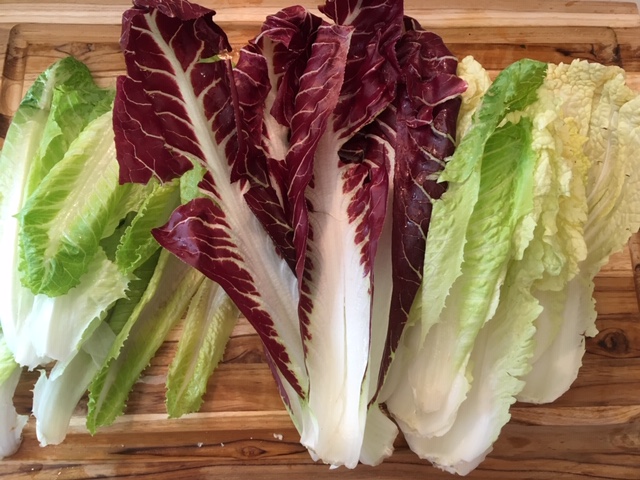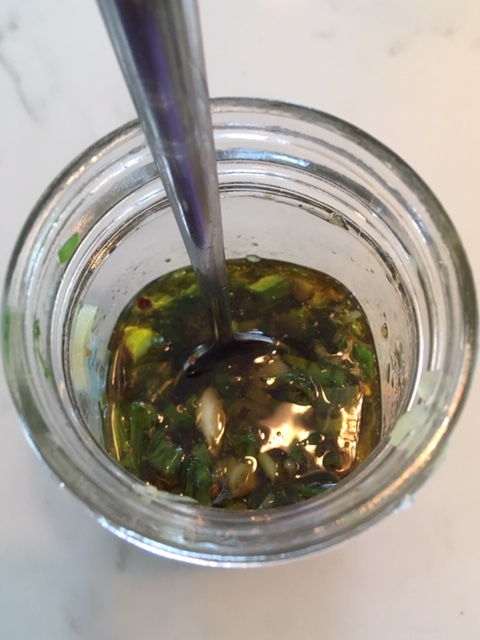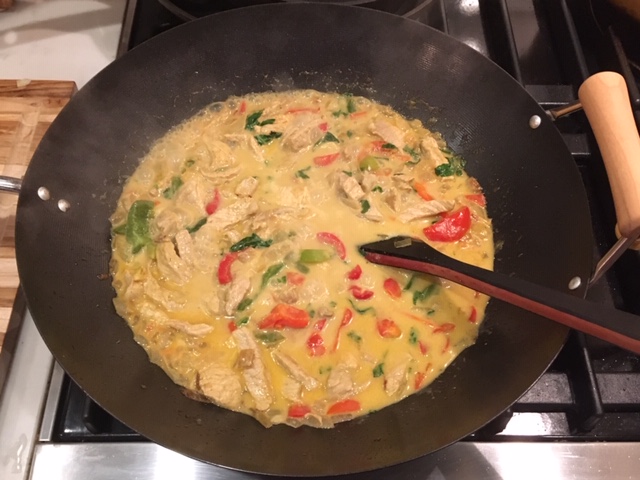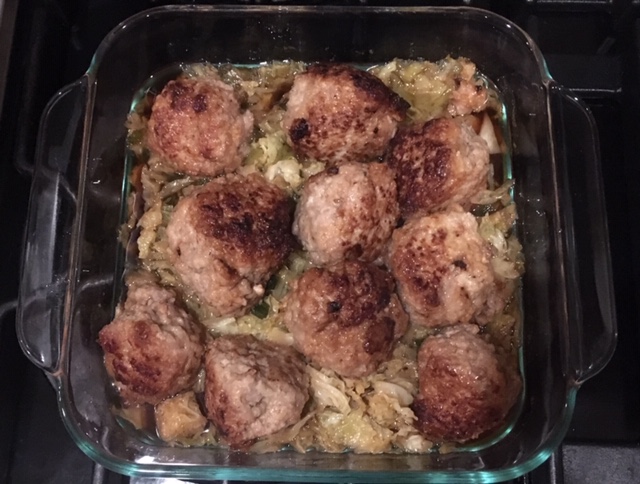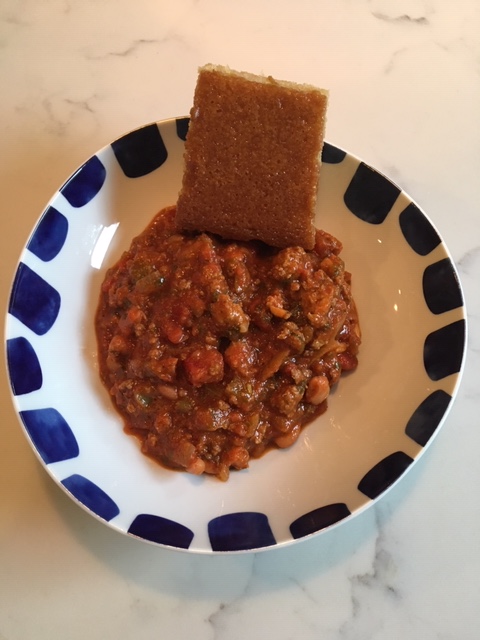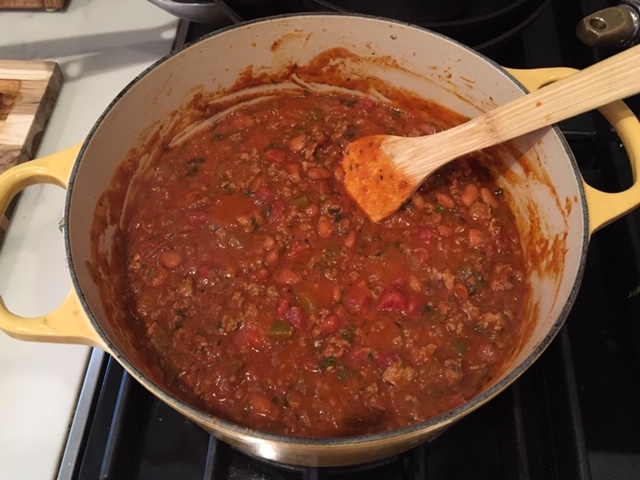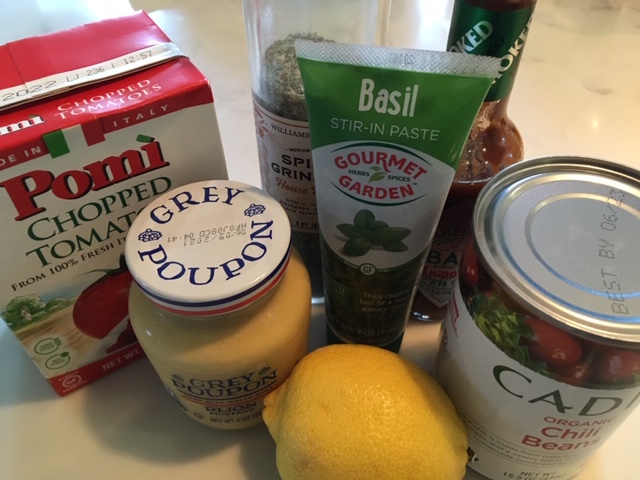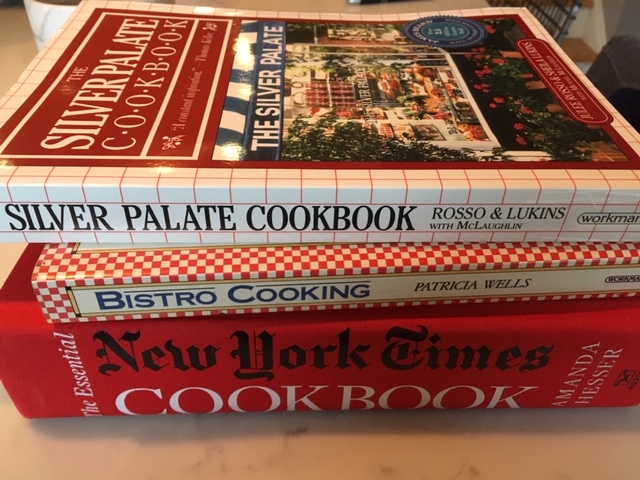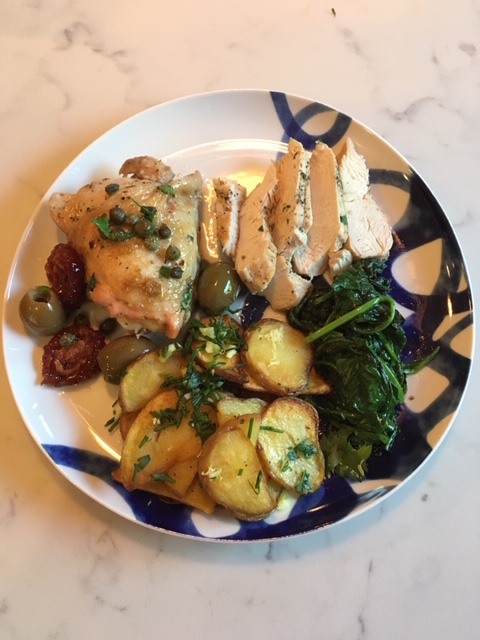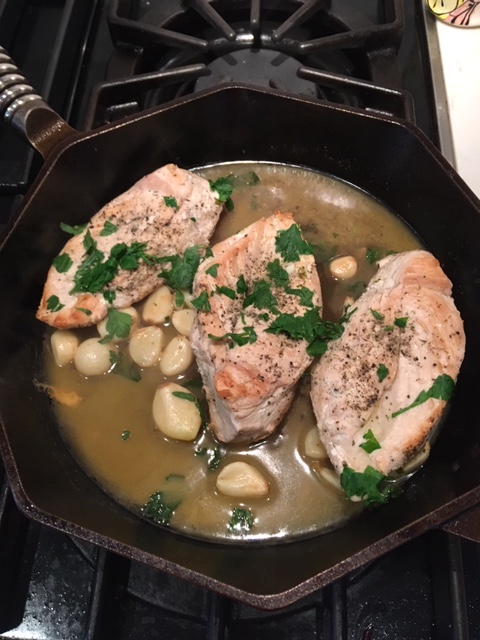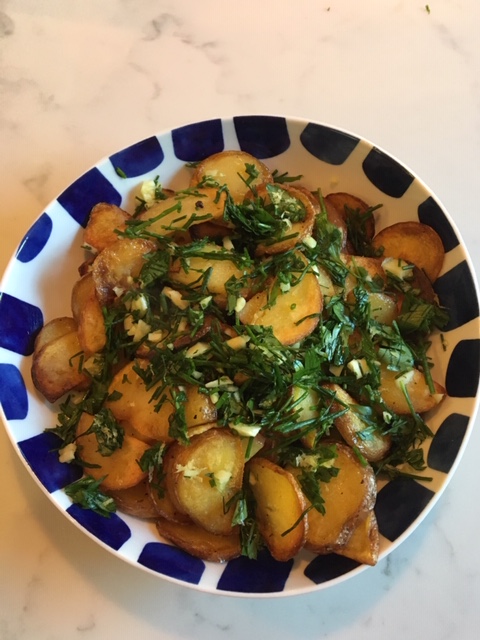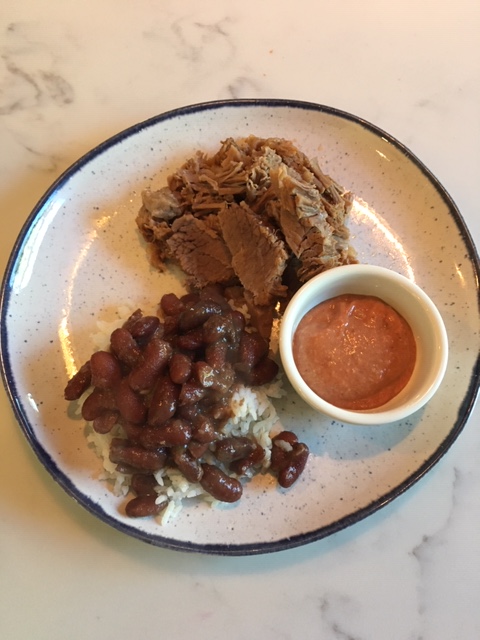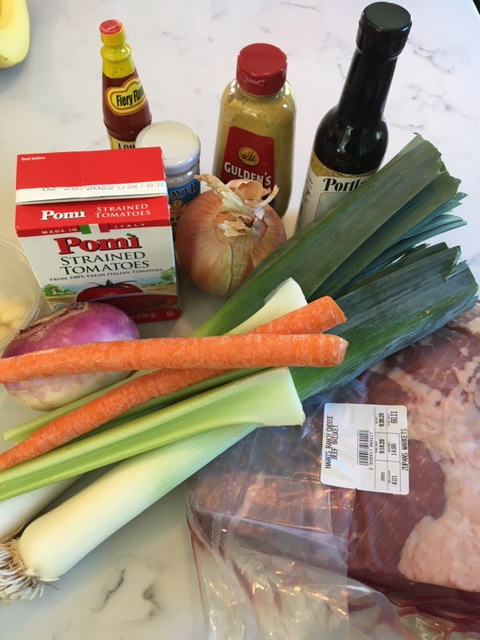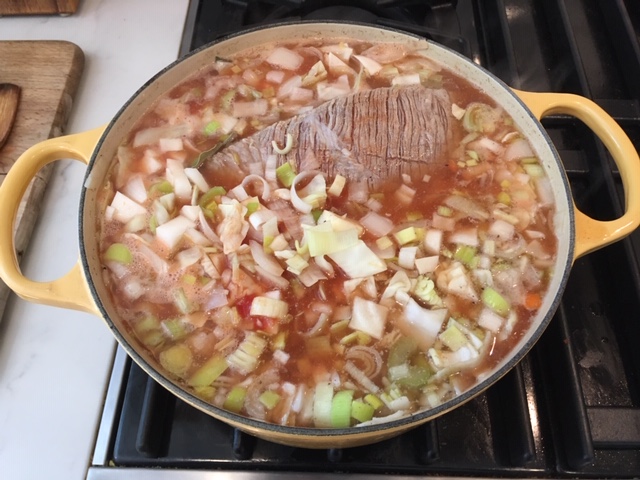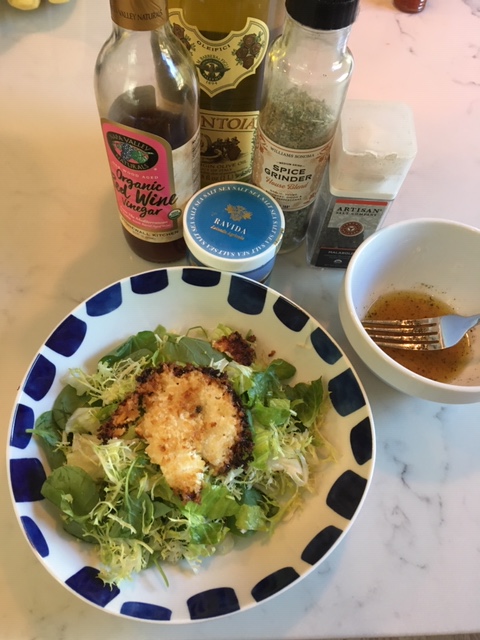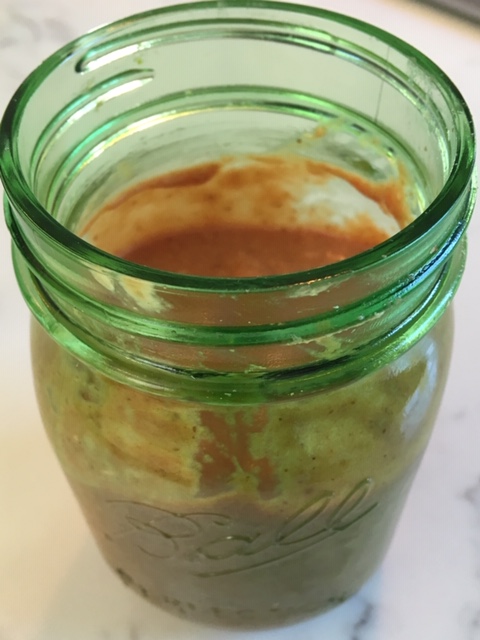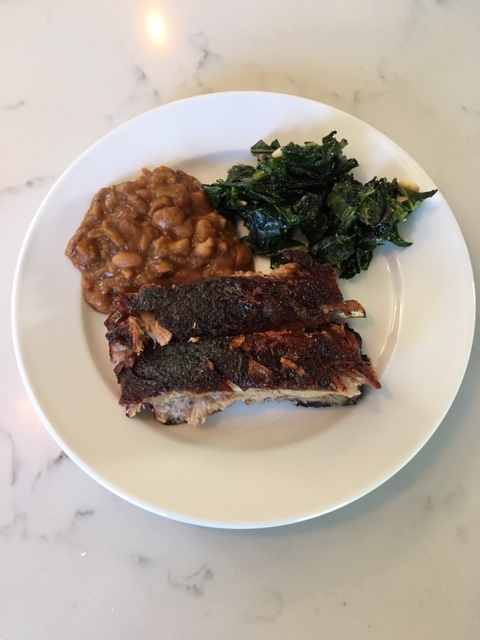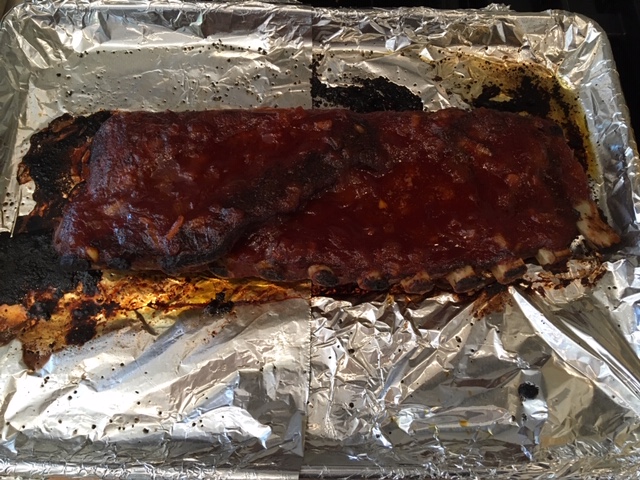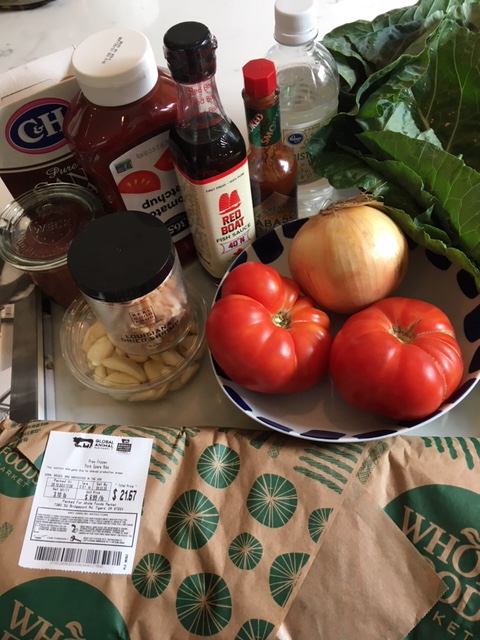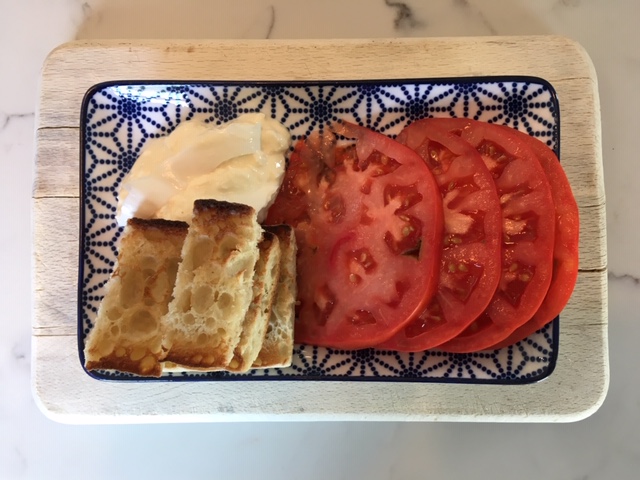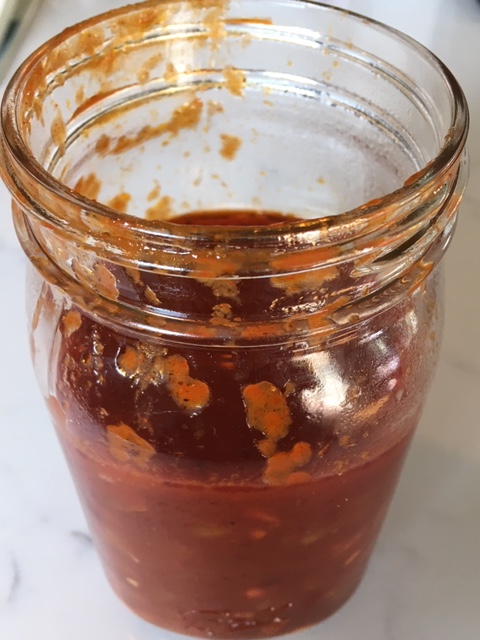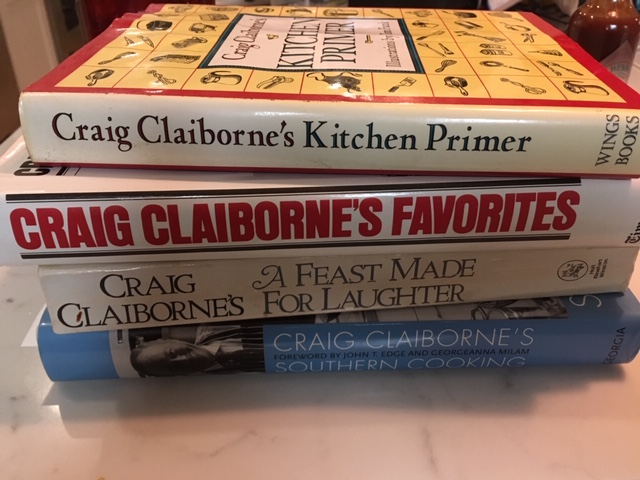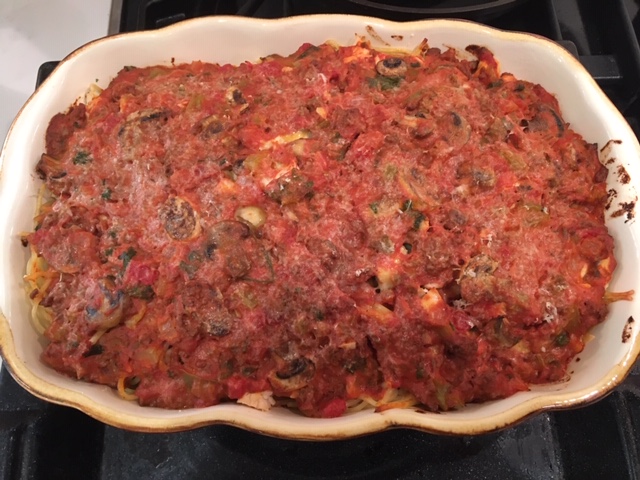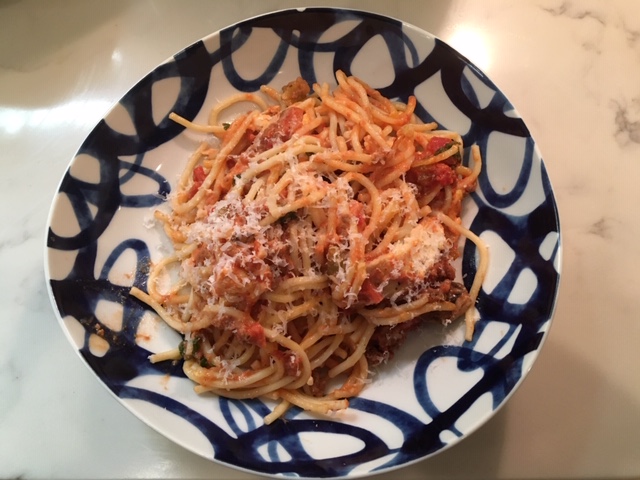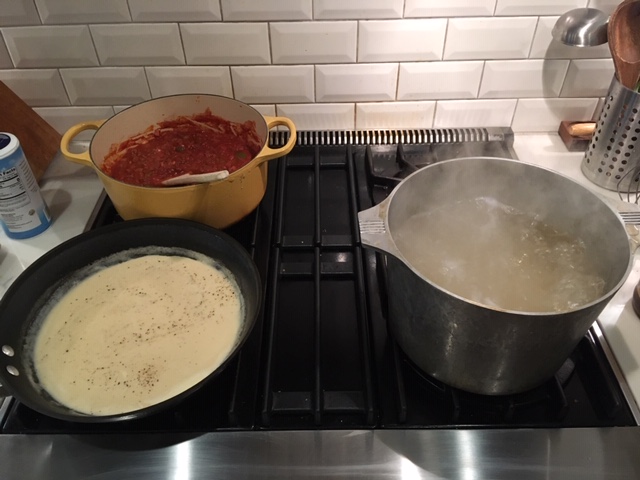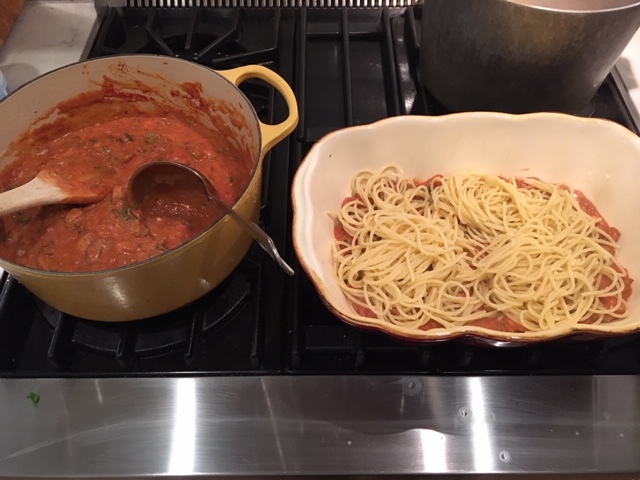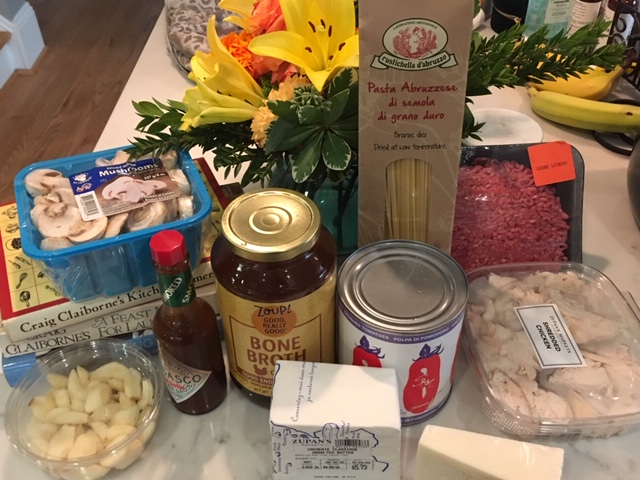“Jambalaya and a crawfish pie and filé gumbo; cause tonight I’m gonna see my ma cher amio…” Hank Williams
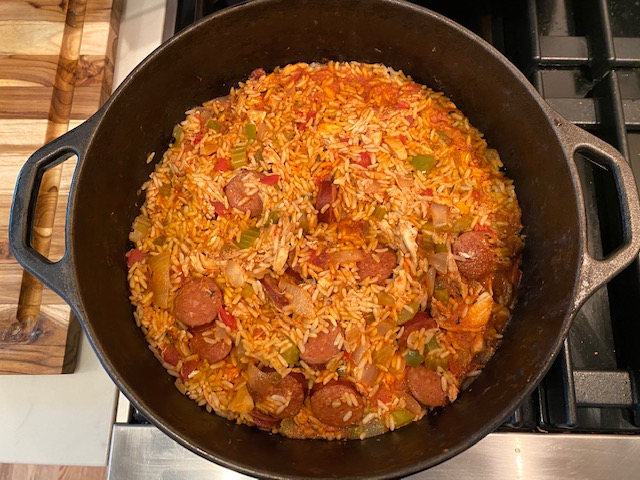
I recently made the perfect jambalaya! Why was it perfect? Because it tasted just like the jambalaya I have been served so many times in New Orleans at large family gatherings, often during Carnival but also year round, including even the Marriott-managed cafeteria at Loyola University. The special trick behind the perfectness of this jambalaya – precisely following Tom Fitzmorris’ recipe, including using Uncle Ben’s parboiled rice.
I have traditionally used Mahatma long-grain rice in making jambalaya. I am not generally a fan of Uncle Ben’s, but I have had such good luck in reproducing versions of other New Orleans classics using Tom’s recipes that I decided to follow his advice. The results in this case were, well, perfect, at least to my taste buds, with the rice demonstrating a slightly al dente firms that nonetheless took on the characteristics of the seasoned red broth in which it steamed.

My first memory of eating jambalaya was during an event at Loyola for admitted students in 1987. I was vaguely aware of the dish, and had possibly tasted it before, but that first bite was a revelation. It was dense, a little chewy and had the perfect amount of spicy kick. I was 18 years old, and on the verge of starting college meaning I was, in a word, nervous. I was grateful for that magical bowl of red tinted rice studded with chicken and piquant sausage. As it turned out, that first taste of jambalaya offered a preview of the exotic life ahead of me as a college student living and studying in the Creole metropolis.
In hindsight, it’s interesting that I grew up on the Mississippi Gulf Coast eating gumbo and fried seafood and poboys but have no prior recollection of jambalaya. It’s a food unique to New Orleans and its Louisiana environs, at least in my mind, and it’s a food best served at parties (say during Carnival season) or to large groups like soon-to-be college students. There are essentially two styles of jambalaya – Creole featuring some form of tomato product and Cajun with no tomatoes and a color and consistency not unlike a traditional dirty rice recipe. The Fitzmorris recipe can go either way, and I added a 16-ounce can of crushed tomatoes to give it the color and consistency of that first jambalaya at Loyola. For my money, Donald Link’s jambalaya recipe represents the best of the Cajun variety.
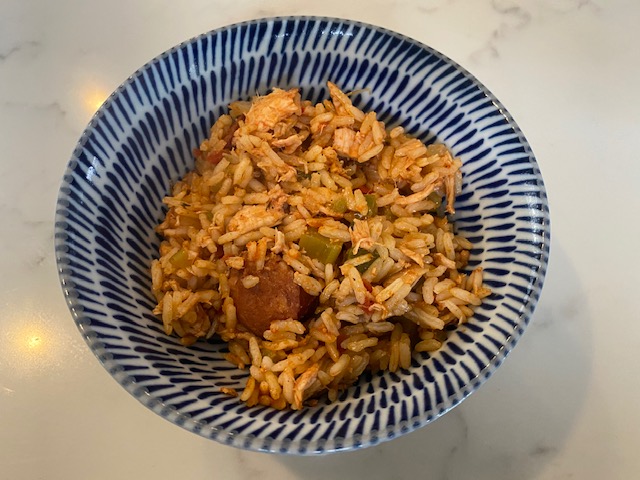
To demonstrate my affinity for jambalaya of all varieties, one of my favorite exercises is to conduct a taste test of the respective varieties served at the annual New Orleans Jazz and Heritage Festival. I look forward with great anticipation to the day when I can yet again conduct that test, maybe, the vaccine gods willing, this fall when the rescheduled Fest takes place.
As part of my ongoing effort to cook foods of the African diaspora and to pay homage to the roots of this favorite dish, I also recently tried my hand at the classic West African dish, Jollof Rice. Much has been written regarding the lineage of Jollof and Savannah Red Rice and their connection to jambalaya. For a full-length study of these connections between the food of Africa and the staples of Southern cuisine, I highly recommend Jessica B. Harris’ “High on the Hog: A Culinary Journey from Africa to America.”
I looked at several recipes from Marcus Samuelson, but ultimately opted for this less demanding recipe from The New York Times. I took another shortcut by using a pre-made Jollof Rice seasoning, which I acquired along with some other Caribbean foodie finds (jerk seasoning, curry powder from Trinidad and finely ground Aleppo and Scotch Bonnet pepper) at the local Caribbean Spice market on 42nd Street. If you live around Portland, it’s worth the trip.
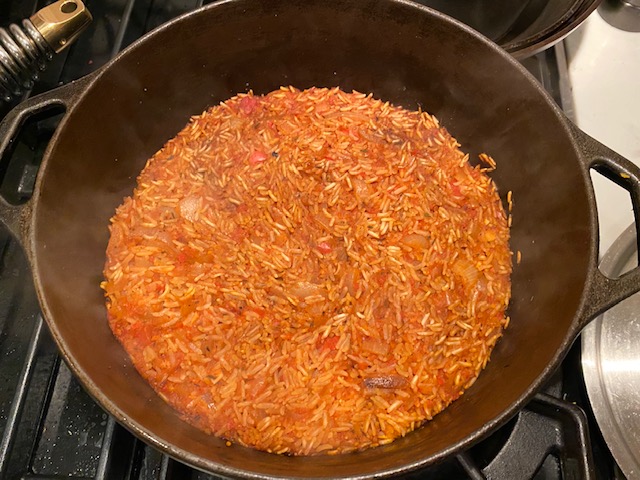
The Jollof Rice, made with Thai jasmine rice, was spicy and delicious with a sharp ginger bite that distinguished it from my beloved jambalaya. Like jambalaya, Jollof Rice is party food, meant to be served to a large group of people. I will definitely try it again. Maybe, when things are more normalized, I will invite folks over for a jambalaya/Jollof taste test, not unlike my own Jazz Fest experiments.
During the decade plus I lived in New Orleans, I was a regular at an annual outdoor party hosted by my high school friend Will’s family near the north edge of Audubon Park. The party was always held on the Sunday morning prior to Mardi Gras day; that’s today by the way. The hosts always brought in kegs of beer and huge tin trays of traditional Creole jambalaya. In my memory, those parties were sunbathed affairs where people danced to the Radiators’ “Law of the Fish” album and enjoyed the jambalaya and the beer and the company of fellow revelers, all in anticipation of the three solid days of fun to come. These memories shine bright for me, even to this day.
Speaking of Mardi Gras, I am hoping to squeeze in another post before Tuesday about my love of the ultimate Carnival season treat, king cake, a food easy to ridicule but deeply beloved by many Gulf Coast natives, myself included. This week I am donating $50 to the Emeril Lagasse Foundation. Thank you for spending a little time with me.

